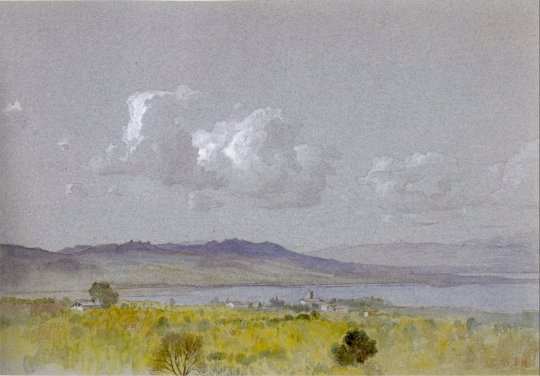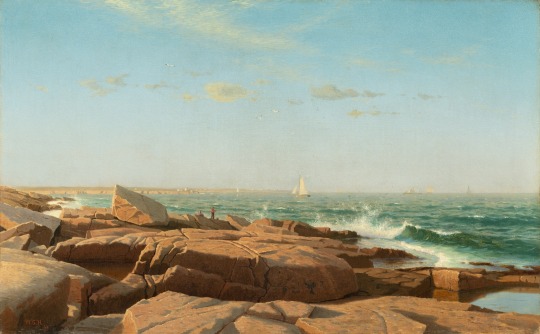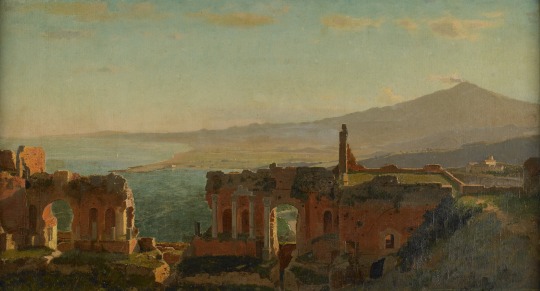#william stanley haseltine
Explore tagged Tumblr posts
Text

Lake Lucerne, William Stanley Haseltine, ca. 1880
#art#art history#William Stanley Haseltine#landscape#landscape painting#Switzerland#Lake Lucerne#Dusseldorf School#Hudson River School#Luminism#American art#19th century art#Honolulu Museum of Art#watercolor#gouache
128 notes
·
View notes
Text

Narragansett Bay (1864, oil on canvas) | William Stanley Haseltine
#art#fine art#painting#oil painting#19th century#Narragansett bay#william stanley haseltine#seascape
20 notes
·
View notes
Text

A Venetian Lagoon, 1871/1874 William Stanley Haseltine (1835-1900) National Gallery of Art
1 note
·
View note
Video
youtube
Immerse Yourself In The Serene World Of William Stanley Haseltine's Artw...
#william stanley haseltine#art#artwork#artist#artist on tumblr#painting#oil on canvas#oil painting#oilpaint#youtube#4k#master#masterlist
1 note
·
View note
Text

0 notes
Text

Vesuvius at Dusk, circa 1872. Painted by William Stanley Haseltine
17 notes
·
View notes
Text

'Mount Tacoma'. William Stanley Haseltine. 1899.
48 notes
·
View notes
Text
I wrote an essay for one of my college classes and my mom said it was really good and changed the way she saw the art I was describing, so I thought I'd post it.
This is the piece, it's Santa Maria della Salute, Sunset, 1870-85 (oil on canvas) by William Stanley Haseltine:

And this is my essay:
It seems evident that the artist must have used glazing to get the yellows and pale oranges to stand out as they do. This creates a wonderful contrast between the light of the sun and the muted colors of the subjects. It gives the impression that perhaps the buildings and boats are not the true subject of the painting but perhaps it's a study of the light itself, as that is what the eye is drawn to. The light manages to be dramatic, diffused, and shimmery throughout different parts of the painting, at the back of the building, in the reflection of the clouds, and in the water respectively.
The artist has managed to make the sails of the boats seem sheer, as though you can see shadows and light coming through the canvas. The blues used to denote the shadow of the building, the water, and the sky help to balance what would otherwise be a very warm painting (I do not mean the balance we use to refer to the composition of a piece). I think one of the things that works best to show the distance in the painting is how the sails are taller than the building, though the boats themselves seem like fairly small fishing vessels. The triangular sails cutting into the sky seems interesting in comparison to the rounded edges of the building and the diffused quality of the clouds they stand against.
3 notes
·
View notes
Text

A painting of Porto Venere, near Spezia, Italy. By American painter William Stanley Haseltine (1835-1900)
2 notes
·
View notes
Photo

Baths of Trajan, William Stanley Haseltine, 1882
#baths of trajan#William stanley haseltine#haseltine#1882#1880s#1800s#19th century#landscape#painting#art
22 notes
·
View notes
Photo

Vesuvius at Dusk, William Stanley Haseltine, 1872
Oil on canvas 23 x 17 in. (58.4 x 43.2 cm)
#art#painting#william stanley haseltine#1870s#19th century#oil#luminism#american#hudson river school#dusseldorf school#landscape#vesuvius#italy#100 notes
463 notes
·
View notes
Photo

Natural Arch at Capri by William Stanley Haseltine
42 notes
·
View notes
Photo

William Stanley Haseltine (1835-1900) "Castle Rocks at Nahant, Massachusetts" (1865) Oil on canvas Hudson River School Located in the Mariners' Museum, Newport News, Virginia, United States
#paintings#art#artwork#seascape painting#ocean#william stanley haseltine#oil on canvas#fine art#hudson river school#mariners' museum#history museum#gallery#newport news#virginia#united states#american artist#horizon#ship#shining sun#clouds#rocks#shore#waves#1865#1860s#mid 1800s#mid 19th century
137 notes
·
View notes
Photo

MWW Artwork of the Day (7/1/21) William Stanley Haseltine (American, 1835-1900) Natural Arch at Capri (1871) Oil on canvas, 86.4 x 139.7 cm. National Gallery of Art, Washington DC
Haseltine combines seemingly-opposed modes of landscape painting to a powerfully dramatic effect. By juxtaposing a close-up, detailed foreground with a distant, atmospheric background, Haseltine created a dynamic spatial tension that moves the viewer's eye from near to far and back again in a visually startling way. He deliberately minimized the presence of human elements: only the miniscule sailboats plying the water and the tiny form of the Villa Jovis give the viewer any sense of relative scale. As a result, the foreground rocks seem fantastically huge, capable of dwarfing all human endeavor. This theme of man and his creations appearing insignificant in the face of nature was common in nineteenth-century American landscape painting. (from the NGA catalog)
3 notes
·
View notes
Photo

William Stanley Haseltine - Coastal Cliffs (Ischia)
171 notes
·
View notes
Text
Satan’s View of Nature

Morning Light, Roman Campagna by William Stanley Haseltine
“You are enjoying the Roman Campagna, Mr. Wondergood? A magnificent sight! It is said that the Campagna is noted for its fevers, but there is but one fever it produces in me—the fever of thought!”
Apparently Wondergood did not have much of a liking for nature, and I have not yet managed to develop a taste for earthly landscape: an empty field for me. I cast my eyes politely over the countryside before us and said:
“People interest me more, Signor Magnus.”
—Leonid Andreyev, Satan’s Diary
2 notes
·
View notes